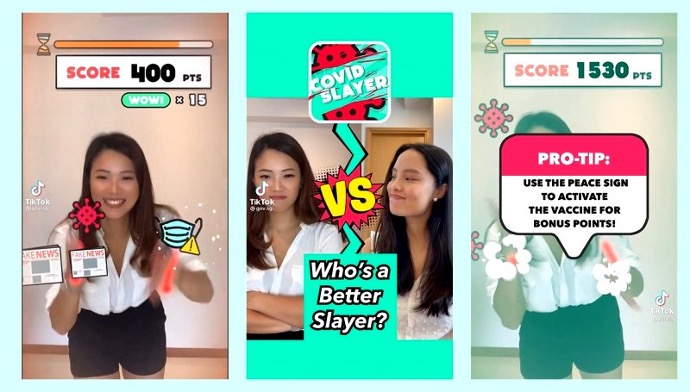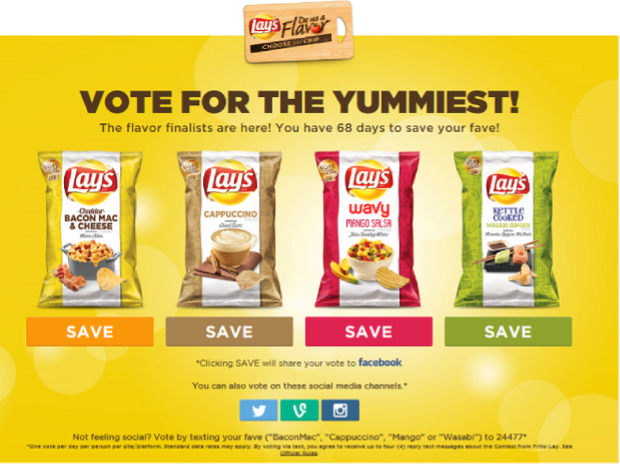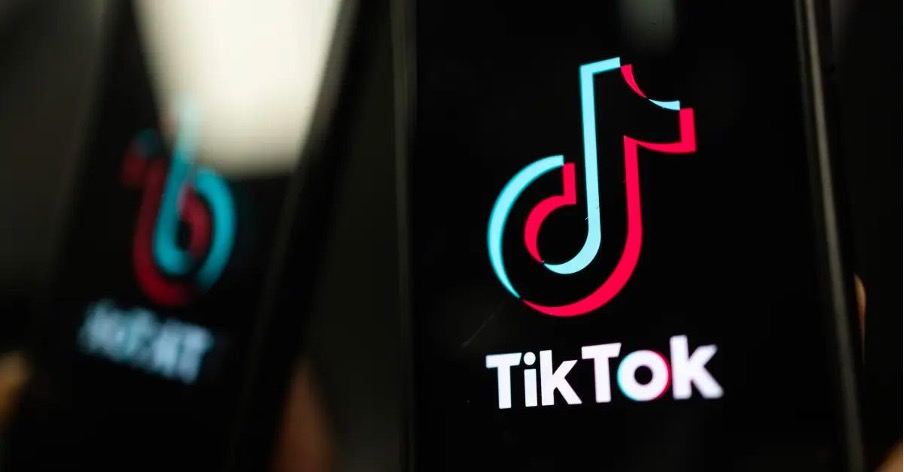Reaching 1 billion users faster than all other social networks, TikTok is a powerhouse that claimed the crown of being the fastest-growing social media platform so far. In the ever-evolving landscape of social media, TikTok captivates users with its addictive content and consumer engagement, standing out from its competitors. What can brands learn from TikTok’s success?
It is high time for brands to step up, challenge the status quo and move away from the conventional approach of simply blasting out Unique Selling Propositions (USPs). Consumers are no longer solely motivated by product features and functional benefits alone; they seek experiences that resonate and crave a deeper connection with the brands they engage with. This is precisely where Emotional Selling Propositions (ESPs) come into play, offering brands an opportunity to create meaningful interactions that extend beyond mere transactions.
LOL Marketing: Humour
A staggering 91% of people globally prefer brands to be funny. Yet, 95% of business leaders fear using humour in consumer interactions. This discrepancy between consumers’ desires and business hesitations highlights a missed opportunity for brands to engage their audience in a more captivating and memorable way. Humour has the unique ability to hold the attention of users till the very end. The element of surprise, witty punchline and relatable comedic moment all contribute to creating an engaging viewing experience that resonates with users. By infusing content with humour, positive emotions are evoked, allowing a brand to establish a more humanised persona for an authentic connection with consumers. Humourous content is also highly shareable as users have a strong inclination to share funny videos with their family and friends, increasing brand visibility and organic reach.

Source: wordstream.com
While humour can be a powerful tool for content creation, there are potential cons. Humour is subjective. What may be funny to one might not resonate with another, running the risk of confusing and alienating consumers. Cultural sensitivities and nuances must be considered to avoid misinterpretations and insensitivity that would make a brand less reputable. Ultimately, employing humour requires a careful balance to ensure that it aligns with a brand’s values and messaging. Going too far with jokes or relying too heavily on humour can detract from rather than enhance the overall brand experience.
The Game Plan: Gamification
The gamification market is estimated to grow by 30.1% by 2024. This represents a significant opportunity for brands to embrace and capitalise on gamification. Incorporating game-like elements and mechanics taps into the innate human desire for challenge, competition and rewards. Fostering a sense of achievement and progression encourages users to strive to complete tasks to earn points and unlock rewards. Such an immersive and interactive experience keeps users engaged for longer periods of time whilst making content more exciting and shareable. Gamification also enables brands to gather valuable data and insights about their audience’s preferences and behaviours. By leveraging this information, brands can then refine their content strategy and tailor offerings to deliver a more personalised and impactful user experience.

Source: marketing-interactive.com
Nevertheless, the development and implementation of gamified content require careful planning and development, a resource-intensive and time-consuming approach. Additional effort is also needed to make novel gamification elements to reduce potential user fatigue or disinterest. Another concern is the ethical considerations that must be taken into account to ensure that users and their data are not exploited or manipulated.
Keeping it Real: Authenticity
In an era where transparency and genuine interactions are highly valued, brands can find immense value in showcasing raw, everyday moments. Authenticity is not about perfection; it acknowledges flaws, embraces vulnerability and demonstrates a willingness to learn and grow. By veering away from overly polished and staged content, authentic portrayals humanise a brand, making it more approachable for users seeking genuine connections and relatable content. However, brands should be mindful that focusing solely on content about everyday occurrences can be creatively limiting and make maintaining a level of professionalism and reputation difficult. Consumer expectations also evolve and what may be considered authentic today may not necessarily be perceived the same way in the future. Constant adaptations should hence be made alongside trends to stay relevant.
The Ripple Effect: Social Proof
Building on authenticity, showcasing positive reviews and testimonials through user-generated content (UGC) and influencers can generate social proof, a concept that individuals are more likely to make decisions based on the behaviours and opinions of others. Research has found that 75% of consumers search for reviews before buying something, highlighting that consumers are more inclined to trust and engage with content when they see others enjoying or endorsing a brand. In addition, TikTok’s algorithm amplifies credibility by recommending videos that garner engagement and views to a wider audience. Leveraging social proof can allow a brand to tap into a platform’s vast user base to foster organic brand advocacy and drive conversion. Conversely, overdependence on external validations could escalate to a situation where a brand’s reputation and success are tied to the opinions of others. This limited control over content and messaging carries a risk that not all brands might be willing to take.
Beyond Likes: Social Engagement
There is power in meaningful interactions and conversations with users. Social engagement goes beyond simply broadcasting messages; it involves listening, responding and connecting with consumers on a deeper level. Actively seek feedback and address concerns to cultivate meaningful relationships and gain valuable insights to adapt to the changing needs and preferences of users. A more dynamic way of feedback collection involves incorporating polls and quizzes into a brand’s content.

Source: wavespot.net
This approach is a simple yet effective way for brands to collect real-time feedback on opinions and trends, driving meaningful engagement. In addition, fostering a sense of co-creation makes consumers feel valued and invested in a brand’s success. Customer-centric brands are better equipped to thrive and succeed.
Riding the Wave: Trend Spotting
With its viral challenges and dance trends, TikTok serves as an unparalleled platform for observing and capitalising on emerging trends. TikTok’s dynamic nature offers a perfect opportunity for brands to actively monitor popular content, hashtags and user behaviours to tap into the collective consciousness of the platform and align marketing efforts with the latest trends. This would allow a brand to connect with its audience on a deeper level whilst positioning it as a trendsetter within the industry. Brands that keenly spot and leverage these trends demonstrate their ability to stay ahead of the curve, unlocking new opportunities. Likewise, trends should be approached with a strategic mindset. Too much and brands risk losing differentiation or coming across as forced and inauthentic. By being selective, brands can ensure that their participation feels authentic.
Emotional Engineering
Different industries should strategically evoke specific emotions to drive distinctive desired behaviours from consumers.
The finance and insurance industry faces the challenge of gaining the trust of sceptical consumers. To address this, brands should emphasise their trustworthiness and expertise in their messaging and interactions to instill confidence in consumers, assuring them that their financial well-being is in capable hands. Additionally, invoking fear over the potential risks of not having adequate financial security can encourage consumers to rely on the brand when things turn south. However, feelings of surprise should be avoided as it might undermine the perception of stability and reliability.
Retailers should focus on evoking positive emotions such as joy and interest to create a positive association with the brand. Such brands should make customers feel good by offering exclusivity and showing exceptional customer service. Creating a memorable and enjoyable shopping experience creates satisfied consumers who are more likely to become repeat customers and brand advocates. On the other hand, it is important to steer clear of remorse and annoyance as they can deter consumer engagement.
Brands in the travel and tourism industry should stress emotions of optimism and ecstasy. Portraying destinations, experiences and adventures in a positive light can inspire potential travellers. Such feelings contribute to higher overall satisfaction and increased engagement and expenditure in tourism activities.
The Secret Weapon: ESPs
The success rate of emotional marketing campaigns is at a whopping 31%. It is time to acknowledge that the time for ESPs has arrived, and forward-thinking brands should seize the opportunity to integrate some engaging elements into their content strategy to shape the future of brand-consumer relationships. Whether it is evoking a sense of belonging, excitement, nostalgia or inspiration, ESPs have the power to seep into deep-seated emotions that drive consumer behaviour. Equipping ESPs is not just an option, but a strategic imperative for brands seeking to thrive in the landscape of consumer engagement.




